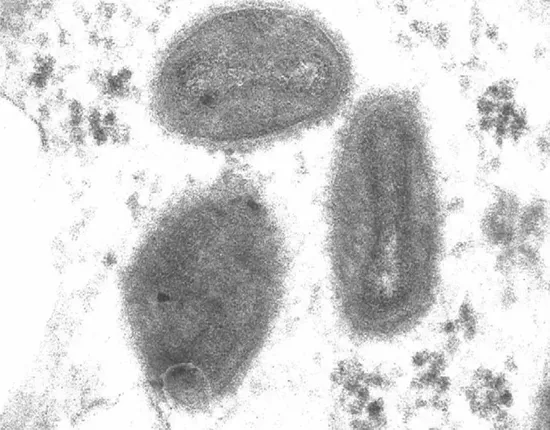Recently, several countries including the UK, Portugal and the United States reported unusual cases of monkeypox. The World Health Organization (who) has also issued a notice to remind global health institutions to pay attention to the development of the epidemic. Monkeypox is a disease caused by monkeypox virus infection. Monkeypox virus is not a new virus. It was found in the Democratic Republic of Congo as early as the 1970s.
Sporadic outbreaks still occur in the forest areas of central and western Africa. The unusual feature of the monkeypox cases found in many European and North American countries is that most patients have not been to Africa, and the source of their infection cannot be determined. The report of the European Center for Disease Control and prevention pointed out that this is the first time that the transmission chain reported in Europe has no epidemiological link with central and West Africa.
Monkeypox may still be unfamiliar to most people. In today's article, Wuxi apptec content team will introduce its relevant knowledge to readers.

What is monkeypox
Monkeypox is a disease caused by monkeypox virus infection. Monkeypox virus is a close relative of smallpox virus. It is a zoonotic virus. Although it is called monkeypox virus, it does not exist only in monkeys. It is mainly transmitted to people through various wild animals such as rodents and primates, but it can also be transmitted between humans.
Symptoms and severity of monkeypox
The incubation period of monkeypox can reach 5 ~ 21 days. During this period, the patient has no symptoms.
In the early stage of onset (0-5 days), the symptoms of patients are similar to those of colds, including fever, headache, muscle pain, fatigue and weakness, and swollen lymph nodes, which are unique characteristics of monkeypox compared with smallpox.
Usually, patients will have different stages of rash within 1 ~ 3 days after fever. The rash may initially appear in the mouth and then spread from the face to other parts of the body. The number of rashes ranges from a few to thousands. The rash evolved from a flat maculopapular rash to a small blister filled with liquid to an pustule. The scab formed after about 10 days and disappeared after about three weeks. These rashes are usually very painful. When a rash occurs, the patient is infectious.
Monkeypox is usually a self limiting disease, which means that without treatment, patients will heal themselves, and the symptoms usually last 14-21 days. However, depending on the degree of virus exposure, the patient's health status and the severity of complications, severe patients may also die. Among the two prevailing monkeypox viruses, the recorded mortality of West African virus strain is 1%, and the Congo Basin virus strain may cause more serious diseases, with a mortality of about 10%. Recently, the virus of monkeypox patients found in Europe is a West African virus strain.
Mode of transmission of monkeypox virus
The main mode of transmission of monkeypox virus is through direct contact with the blood, body fluids, skin or mucosal wounds of infected animals. The patient's skin or skin rash is mainly spread by the patient's infected skin or the patient's close contact with the patient's respiratory tract. Monkeypox virus can exist in respiratory droplets, but it usually takes long face-to-face contact to spread. Therefore, the family members of infected people face a greater risk of infection.
Prevention and treatment of monkeypox virus
CDC's official website pointed out that common household disinfectants can kill monkeypox virus. Because monkeypox virus and smallpox virus are close relatives, the vaccine against smallpox virus also has protective effect on monkeypox virus. Previous data obtained in Africa showed that the smallpox vaccine was at least 85% effective in preventing monkeypox. However, because smallpox virus has disappeared in the 1980s, smallpox vaccine is not a routine vaccine. The immunity of individuals who have been vaccinated with smallpox vaccine has also decreased significantly after many years, and the protection ability against monkeypox virus is limited.
In terms of treatment, there is no specific drug for monkeypox at present. As a means to control the outbreak of monkeypox virus, smallpox vaccine, antiviral drugs and cowpox immunoglobulin can be used. The FDA approved the first drug tpoxx (tecovirimat) for the treatment of smallpox in 2018, which may also be effective for monkeypox.

▲ molecular structure formula of tecovirimat (picture source: by ED (edgar181) [public domain ], from Wikimedia Commons)
Recommendations of health institutions
As the source of infection has not been determined yet, the World Health Organization and health institutions in other countries recommend strengthening the monitoring of local rash cases, as well as the tracking and tracing of possible cases. Because some symptoms of monkeypox are similar to other rash diseases (such as herpes zoster and rash caused by sexually transmitted virus), some monkeypox patients may be misdiagnosed as other diseases. Medical staff should consider the diagnosis of monkeypox virus infection when finding patients with symptoms similar to monkeypox. Early detection of cases, isolation and tracking of suspicious cases, and improving people's awareness of the disease are the key to prevent secondary infection and effectively control the epidemic.
Questions to be answered
Infectious disease experts said that although monkeypox virus has been found for a long time, due to the limited number of patients (about 1500 cases have been recorded as of 2018), our understanding of it is not as detailed as expected. After the extinction of smallpox virus, people's immunity to monkeypox virus decreased due to the suspension of vaccination. In the Republic of Congo, this shows that the risk of monkeypox infection has increased 20 times in the 30 years after the extinction of smallpox virus. This gives the virus more opportunities to evolve into a variant that is easier to spread among humans.
So far, the R0 value of monkeypox virus (representing how many people can be infected by a monkeypox patient) has been less than 1, which means that monkeypox outbreaks usually subside naturally. However, the unusual characteristics of the monkeypox case have attracted the attention of industry experts. Is the reason for the simultaneous occurrence of monkeypox cases in multiple countries and regions due to the emergence of new virus variants that are easier to spread, or is it just because more people begin to travel across borders, or is there any other reason? In the next few days to weeks, scientists' further research is expected to provide answers. For example, sequencing the virus genome may find mutations in the monkeypox virus genome and provide insights related to the transmission of the virus. At the same time, these data can also be used to analyze the pedigree of monkeypox viruses around the world and better outline the road map of virus transmission.
Scientists are expected to answer the unsolved mystery of this monkeypox case as soon as possible and guide more effective prevention and control methods.